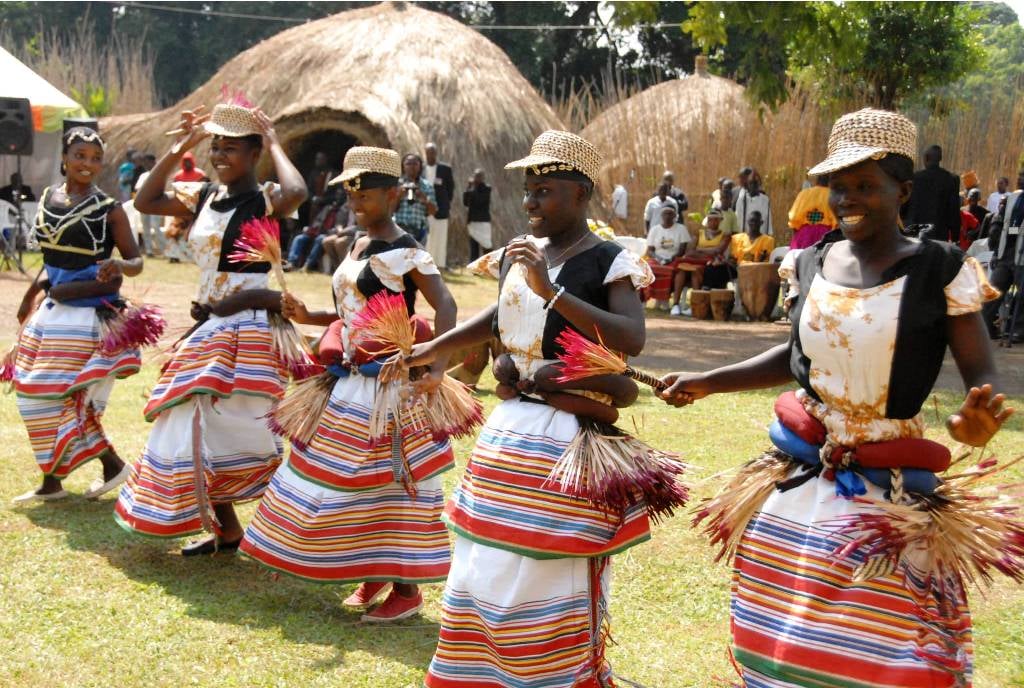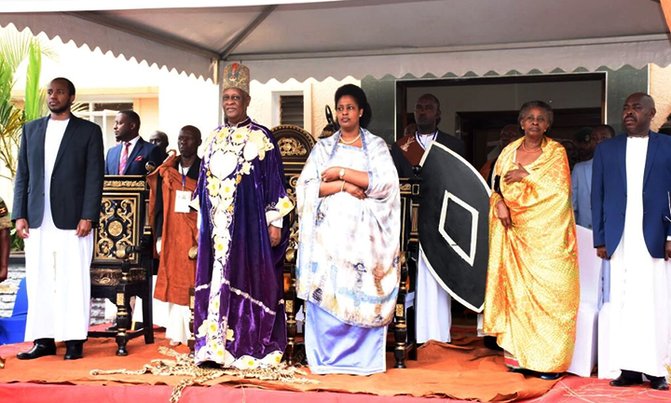
Kingdom of Bunyoro-Kitara
The Kingdom of Bunyoro-Kitara
(Taken from the Kingdom's webpage at bunyoro-kitara.org )
The Kingdom Bunyoro Kitara was a very extensive, prestigious and famous at the height of its power.
Socially, people were organised in strong clans with the royal clan of the Kings, princes and princesses. The King held executive, judiciary and legislative powers. His word was highly respected and almost equated to the word from God. The King’s subjects ensured that their King lacked nothing economically. Clans would bring food stuffs (Ebihotole) in turn and each clan had a specific duty to perform for the King. For example, Abaliisa clan were the shepherds of the Kings cattle (Enkorogi), the Abahamba clan were the hunters and body guards (Abakumirizi) for the King, the Abasiita clan being the artisans and craftsmen and the Bayaga clan were the chief entertainers of the King.
Politically, the King had absolute authority over his subjects. He appointed the county chiefs (Abamasaza) to administer each county. Bellow them were sub county chiefs (Abagomborozi) who were sub-county administrators. These received reports from parish chiefs (Abemiruka) and Sub-parish chiefs (Abatongole). At the very grass root were the village chiefs (Bakuru b’emigongo). With this hierarchical arrangement the king’s messages used to reach at the grass root very fast. Later on the office of the Prime Minister (Omuhikirwa/Katiikiro) was established to head the civil service of the entire Kingdom. All county chiefs report to him and he in turn reports to the King.


Economically, the Kingdom of Bunyoro was the supplier of food stuffs to other neighbouring kingdoms. The fertile soils of the kingdom enabled people to grow plenty of food for home consumption and the surplus was sold to the neighbouring communities. People’s economy thus was greatly hinged on Agriculture carried on using traditionally made hoes. Barter trade was also common.
The people along Lake Mwitanzige (Albert) known as the Bagungu were fishermen. Some communities were hunters using nets, knives and spears as their locally made tools for killing small animals while the big ones were killed using well dug deep pits (Obuhya). People thus exchanged fish or dried meat (Omukaro) with food stuffs. The coming of the Bachwezi introduced the culture of cattle keeping on a larger scale with their long-horned cattle which yielded more milk.
Salt processing in Kibiro is still going on up to today. The Abanyakibiro got their living through the exchange of this salt and fish. The Banyoro also produced a number of wooden items, hides and skins items, palm and sisal items, iron and stone items, pottery and mud items, and many others on economic basis. These were either sold or exchanged for other items that they needed.
Bunyoro-Kitara Kingdom is a Subnational monarchy (traditional)
HM The Omukama Rukirabasaija Agutamba Solomon Gafabusa Iguru I. is a reigning constituent monarch, traditional ruler. He reigns over a legally recognised dominion, but with no sovereign governing / political power. His titles, however, are recognised by the Republic of Uganda.
In Uganda, the ancient kingdoms and chiefdoms that were met by the colonialists when they first arrived on the continent are now constitutionally protected as regional entities.
HM The Omukama (King) of Bunyoro-Kitara Kingdom and the Bunyoro-Kitara Kingdom were restored by the Amendment [No. 8] Act - Statute No. 8, Article 118 (1)- of 1993 enacted by the Parliament of Uganda AND officially recognized and protected by the Constitution of the Republic of Uganda by Chapter IV. –Article 37.-, Chapter XVI. -Article 246. (1) – (6)- of 1995 AND by the Amendment [No. 2] Act -schedule V. -Article 178.8- of 2005 AND by the Acts Supplement [No. 4] -Act 6. of 201
